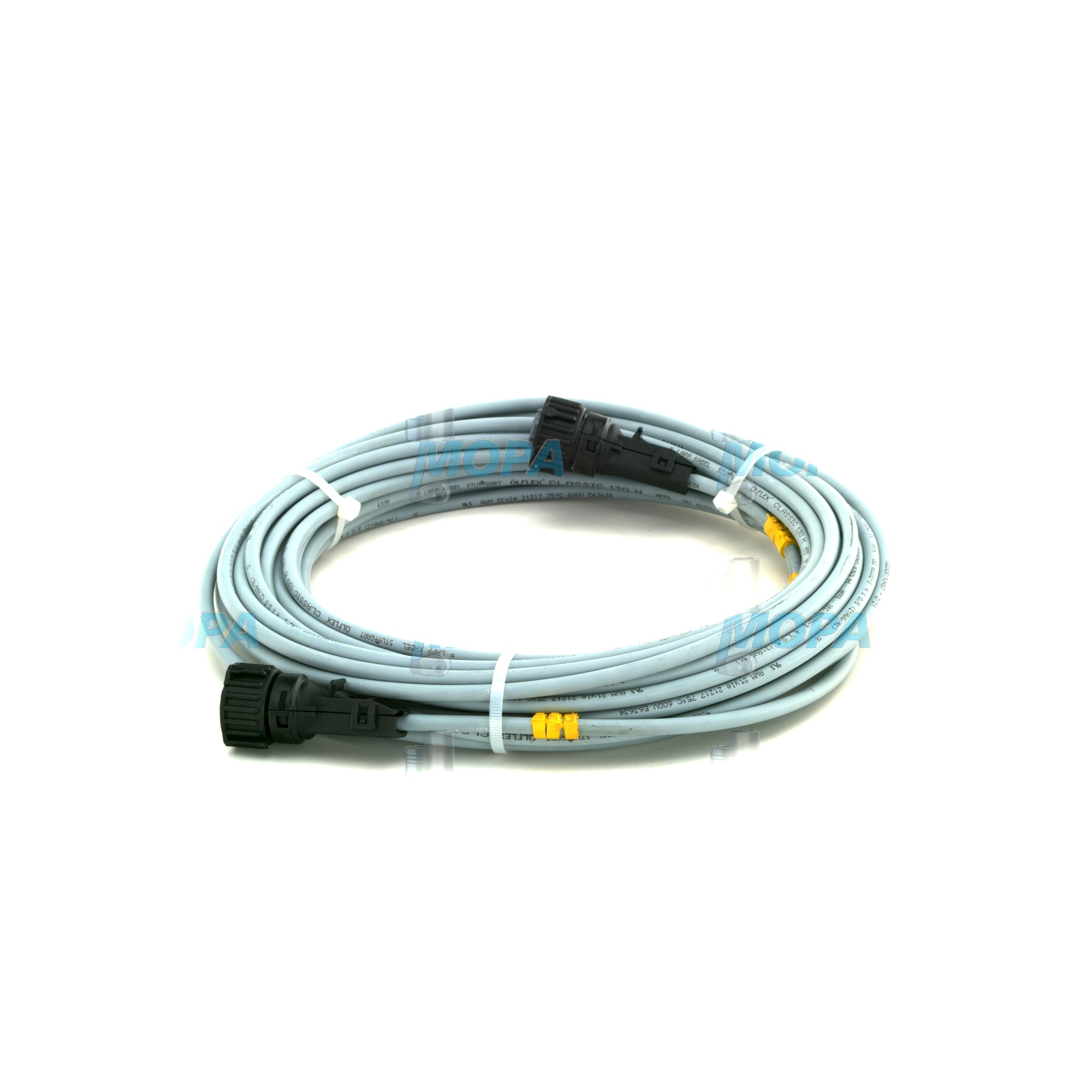CABLE Cables for Marine, Diesel and Gas Engines
Cables are the nervous system of any engine installation. In marine, diesel, and gas engine environments, they transmit power, control signals, sensor data, and ignition energy with precision and reliability. As a component category, Cables encompass power conductors, control and instrumentation leads, data bus lines, and high-voltage ignition sets—each engineered to withstand heat, vibration, oil, fuel, and saline atmospheres common around propulsion and generator sets. Without dependable cable assemblies and conductors, even the most advanced engine cannot start, regulate, protect, or communicate effectively.
In practice, modern engines rely on dedicated cable types: multi-core control cables for governor and actuator commands, shielded twisted-pair lines for CAN bus and RS-485 diagnostics, thermocouple and RTD leads for temperature feedback, robust power Cables to starters and alternators, and, in gas engines, silicone-insulated high-voltage ignition Cables. For shipowners and technical buyers, selecting the right specification is critical to operational safety, uptime, and lifecycle cost control.
CABLE function in marine engine and diesel engine systems
Every CABLE in an engine room fulfills a defined technical role. Power Cables carry high current with minimal voltage drop from battery banks to starters and from alternators back to charging systems. Control and instrumentation Cables route clean signals between the ECU, sensors (pressure, temperature, speed), and actuators (fuel racks, valves, solenoids). Data Cables—commonly 120-ohm twisted pairs—ensure deterministic communication on CAN or Modbus networks without electromagnetic interference. In gas engines, ignition CABLE sets deliver consistent high-voltage energy while suppressing RFI to protect nearby control electronics.
Performance and efficiency depend on low resistance conductors, adequate cross-sections, correct stranding for flexibility, and materials that preserve dielectric strength under heat and vibration. Shielding (foil and braided copper) with proper 360° termination maintains EMC integrity, preventing false trips, unstable idle, or mis-synchronization. Marine-rated sheath compounds (e.g., LSZH/HFFR, EPR, XLPE, silicone) provide flame retardance, low smoke and toxicity, and chemical resistance. Compliance with marine standards such as IEC 60092/IEEE 1580, plus class approvals (e.g., DNV, ABS, LR), underpins safe operation at sea.
- · Reliable power delivery with optimized cross-section and stranding.
- · EMC-safe signal integrity via shielded, twisted-pair construction.
- · Marine-grade sheath materials resistant to oil, fuel, salt, and UV.
- · High-temperature insulation for engine-room environments.
- · Vibration-tolerant designs with robust strain relief and bend radius control.
- · Color coding and core numbering for fast, error-free service.
- · Options for LSZH/HFFR to reduce smoke and corrosive gases.
- · CABLE OEM parts that match engine-builder specifications.
Importance of CABLE integrity for engine operation and safety
Engine reliability is only as strong as the cabling that interconnects its systems. Degraded insulation, corroded conductors, or poorly terminated lugs lead to voltage drops, hotspots, and intermittent faults. On a diesel engine, a compromised sensor CABLE can trigger limp modes, poor fuel economy, or unplanned shutdowns. On a marine engine, water ingress or salt-induced corrosion can cause nuisance trips of safety systems or loss of bridge alarms. For gas engines, deteriorated ignition CABLES may cause misfires, elevated emissions, and damage to catalytic components.
Common failure modes include cracked insulation near heat sources, loose crimps from vibration, EMI ingress due to broken shields, and capillary moisture migration under outer jackets. Preventive practices—regular insulation resistance testing (megger), continuity checks, proper routing away from exhaust manifolds, use of fire sleeves and grommets, correct torque on terminations, and adherence to minimum bend radii—extend service life and minimize downtime.
Advantages of OEM spare parts suitable for Cables
Using OEM spare parts suitable for Cables ensures dimensional accuracy, conductor metallurgy, dielectric materials, and shielding geometries that exactly match the engine builder’s design. This alignment preserves engine performance, reduces commissioning time, and minimizes the risk of intermittent faults that are costly to trace offshore or in remote power plants.
Why OEM parts matter for performance, reliability, budget, and service life
OEM spare parts come with documented electrical and mechanical characteristics—conductor cross-sectional area, strand count, insulation class and temperature rating, EMC performance, flame spread ratings, and environmental test results. When a CABLE for a marine engine or diesel engine is replaced with an equivalent OEM part, the harness retains the intended impedance, shielding coverage, and jacket chemistry required for tight spaces and aggressive media. This consistency helps avoid rework, reduces troubleshooting hours, and protects sensitive ECUs and sensors from noise or transients.
- · Drop-in fit with correct lengths, terminations, and markings.
- · Verified EMC behavior for stable control and data networks.
- · Certified flame and smoke performance for engine rooms.
- · Predictable lifecycle under heat, vibration, and chemical exposure.
- · Lower total cost through reduced downtime and faster installation.
For procurement teams, OEM CABLE OEM parts simplify compliance with fleet standards, class requirements, and internal maintenance procedures—backed by traceability and consistent batch quality.
MOPA — your partner for CABLE OEM parts
MOPA is an experienced and reliable partner for OEM spare parts Cables. With deep knowledge of diesel and gas engine applications, MOPA delivers the right CABLE assemblies and conductors quickly, with proven quality and secure handling. Whether you need shielded control CABLE for a marine engine retrofit, high-voltage ignition leads for a gas genset, or full harness replacements, MOPA ensures fast availability, clean documentation, and careful packaging for demanding environments.
Purchasers and shipowners benefit from responsive sourcing, competitive lead times, and a focus on accuracy—right specification, first time. MOPA supports projects from single-circuit replacements to fleet-wide standardization, supplying OEM parts that align with engine maker specifications and class rules to keep assets running safely and efficiently.
Conclusion
Cables are essential to engine performance, safety, and uptime—delivering power, control, data, and ignition under harsh conditions. Selecting OEM spare parts suitable for Cables maintains the intended electrical behavior and mechanical resilience of your installation. With MOPA as your partner, you secure fast access to CABLE solutions that keep diesel and gas engines operating reliably on land and at sea.



